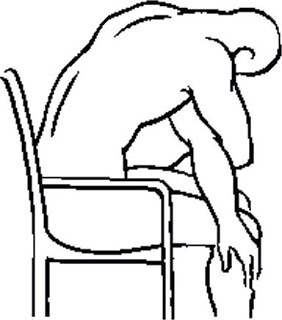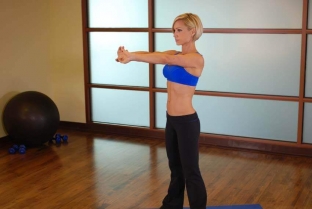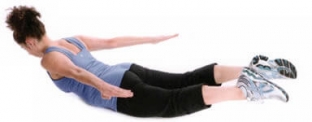The rhomboid muscle is located in the upper back. It consists of two parts – rhomboid muscle and rhomboid minor – and acts as a connecting structure between the scapula and the vertebrae of the upper back. Together with the trapezius muscle and the levator scapulae muscle, it connects the shoulder blades, holds them and brings them back.
The small rhomboid muscle departs from the spinous process of the 7th cervical vertebra, the large – from the 4 superior spinous processes of the thoracic spine, and both of them are connected to the angles of the shoulder blades. What problems can arise with this muscle and how to solve them?
Rhomboid muscle overexertion – possible manifestations and causes of their occurrence
The main functions of the rhomboid muscles are:
- stabilization of the shoulder blades and keeping them on the chest;
- movement of the shoulder blades inward, towards the spine;
- raise of the inner edge of the scapula.
Rhomboid muscle strain or spasm can lead not only to pain in the upper back, but also to limited mobility of the shoulders and neck. The most common cause of this overexertion is a heavy load on the arms and shoulders, for example:
- raising arms above the head (when serving in tennis or placing weights on high shelves);
- wearing a heavy backpack (including on one shoulder);
- rowing;
- incorrect posture while working at the computer;
- incorrect weight lifting technique.
In the case of weakening of the rhomboid muscle, there is a displacement of the shoulder blades and, as a result, stoop. The fact is that the weakening of this muscle entails a number of muscle changes, which is called the upper cross syndrome.
Read also: Lower muscles hurt? A simple stretch will solve the problem
How to eliminate overexertion and spasms of the rhomboid muscle
If you develop chronic back pain, it is best to see a specialist first, especially if the pain was preceded by a back, neck or shoulder injury.
The main symptoms of a rhomboid overexertion are:
- pain between the shoulder blades, which increases with the movement of the arms;
- pain and tenderness in the upper back.
If the pain is too severe, the doctor will prescribe certain pain medications. You can also do massages to relieve symptoms of overexertion of the rhomboid muscle. It is quite difficult to do it yourself, but you can use the tennis ball method:
- lie down on the floor;
- you can put a small pillow under your head for comfort;
- Place a tennis ball between your shoulder blade and spine;
- when the ball touches the stress point, you will feel it;
- lie down on the ball, relaxing your body as much as possible;
- swing the ball over the area of the tense muscle.
Stretching and exercises
- Rhomboid Stretch:

- sit on a chair;
- lower your head;
- lean forward;
- crossing your arms, grab them on opposite knees;
- hold in position for 20 seconds.
- Upper back stretch

- stand upright;
- stretch your arms in front of you;
- lean forward a little;
- tilt your head;
- feel the muscles in your back and neck stretch;
- after 30 seconds, return to the PI.
- Cobra Pose

- lie down on your stomach;
- legs straight, shoulder-width apart;
- arms along the torso;
- palms down;
- slowly raise your upper and lower torso;
- raise your arms with your body;
- pause for a few seconds;
- go down;
- repeat 10 times;
- When taking the cobra pose, do not arch your neck and squeeze your buttocks.
We hope that with the help of simple exercises selected by estet-portal.com, you will be able to relieve the pain caused by overexertion of the rhomboid muscle.






Add a comment